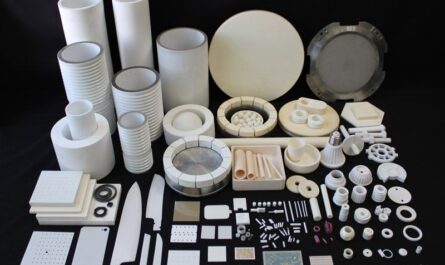History and Evolution of flower farming
Flower farming has a long history spanning many centuries. The cultivation and use of flowers dates back to ancient Egyptians, Greeks and Romans. Flower farming started gaining prominence in Europe during the Victorian era when people started cultivating flowers and ornamental plants for aesthetic and ornamental purposes. Various new hybrid flowers and cultivars were developed through cross breeding experiments. Advances in greenhouse technology further boosted the growth of commercial flower farming.
In the 19th century, the Dutch are credited with establishing the commercial Floriculture farming industry. They pioneered practices like using greenhouses for cultivation and introduced shipping of cut flowers globally. In 1920s, the US emerged as a major player with the development of new flower farming belts in California and Florida. The post-World War 2 era saw further innovation and mechanization of flower farming practices across Europe and America.
Today, flower farming has evolved into a major global industry. Countries like Netherlands, Colombia, Ecuador, Kenya are some of the leading flower producers and exporters worldwide. New technologies in greenhouses, hydroponics and protected cultivation have enhanced yields and made year-round production possible. Flower farming also supports millions of livelihoods and contributes significantly to the export earnings of developing nations.
Floriculture Crop Production
Some of the major flowers commonly grown in commercial flower farming operations are roses, carnations, chrysanthemums, gerberas, liliums or European lilies and orchids. Cut flowers and potted plants dominate the production segments. Factors like climate, soil conditions determine the crops suitable for a particular region. Plants are propagated through stem/root cuttings, seeds, tissue culture etc and cultivated in open fields, greenhouses or hydroponic systems.
Roses occupy the largest area under flower farming worldwide. They require fertile soil, plenty of sunshine and optimum temperature ranging 15-30°C for production. Carnations prefer partial shade and milder climate. Chrysanthemums are seasonal crops sensitive to frost and extremes of heat. Orchids need specialized growing conditions of high humidity, constant temperatures and specific potting mediums. Hydroponics methods are commonly used for crops like orchids, lilies which don’t require soil but just nutrient solutions. Flower farming production also involves practices like training, pruning, disbudding to maintain plant shape and maximize flowering. Regular monitoring and care is essential to minimize pest and disease outbreaks which can ruin entire crops if not controlled on time.
Packing, Handling and Marketing of Cut Flowers
Careful post-harvest handling is essential to maintain freshness and extend vase life of cut Floriculture. They are harvested early in the morning using sharp secateurs before being cooled, graded and packed. Flowers are packed in specialized vapor proof containers or boxes layered with hydrated floral foam to prevent water loss and maintain hydration. Short stem varieties may directly be packed in boxes whereas long stemmed flowers are first bundled together using rubber bands. Flowers are labeled indicating variety, place of origin, and packer details as per global trade standards before dispatch to wholesale markets, florist shops or direct consumers. Advanced technologies like ethylene scrubbers and controlled atmosphere packaging helps extend shelf-life during transportation.
Modern distribution channels include specialized flower auctions, wholesale markets and organized retail chains. Online channels are also gaining popularity especially post covid era. Countries adopt stringent phytosanitary norms to check pests or disease spread during cross-border flower trade. Emerging areas in flower farming marketing include value-addition through pre-made bouquets, arrangements and landscaping services boosting overall demand.
Floriculture Industry Trends and Future Prospects
flower farming industry has been adapting to changing consumer preferences. There is increasing demand for unique, exotic varieties and organic, sustainably cultivated flowers worldwide. Novel bouquet designs, fresh and dried arrangements are attracting both residential and commercial buyers. Technologies like hydroponics and vertical farming helps overcome area constraints and boost sustainable year-round production. Tissue culture and micropropagation methods aid mass propagation of new hybrids.
Flower farming industry is also embracing digitalization aided by blockchain, IoT and analytics. New platforms are enabling transparent global flower sourcing and direct flower retailing. Focus is on reducing carbon footprint through renewable energy usage, waste recycling and utilizing byproducts. Flower farming is creating rural livelihoods particularly women empowerment in developing countries. With growing consciousness about self-care, gifting bouquets on more occasions besides festivals augur well for industry growth in long-term. Flower farming certainly holds a bright future with innovation, R&D and sustainable practices.
*Note:
1. Source: Coherent Market Insights, Public sources, Desk research
2. We have leveraged AI tools to mine information and compile it




